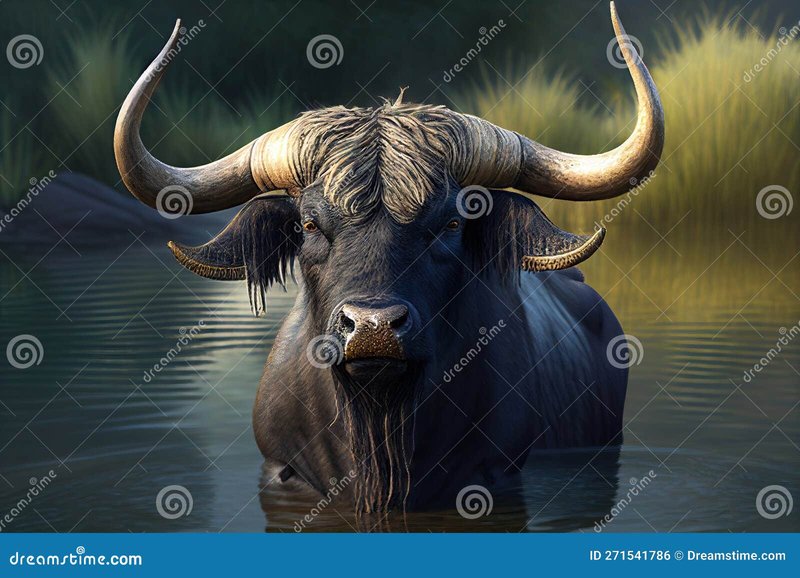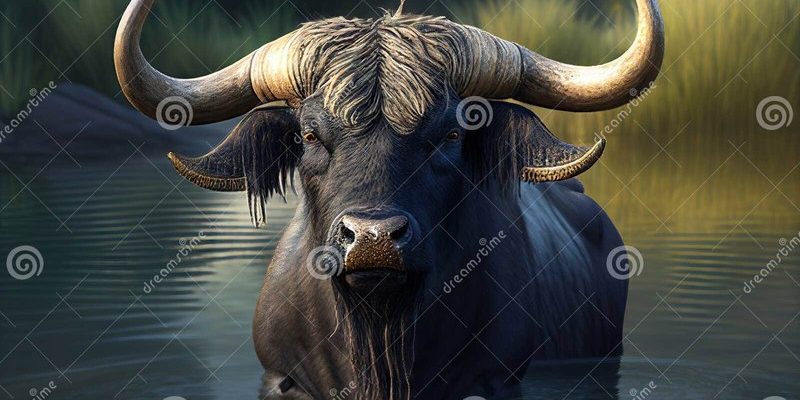
Water buffalo are often called “the farmers of the wetlands.” Not only do they help maintain the landscape, but they also support other wildlife. From their grazing habits to their unique relationship with the environment, these animals impact many aspects of their ecosystem. So, grab your favorite drink, and let’s dive deeper into the fascinating world of water buffalo and their ecological significance!
1. The Importance of Grazing
Water buffalo are natural grazers, and their eating habits play a crucial role in shaping their environment. By munching on grasses and aquatic plants, they help control plant growth. Have you ever noticed how a garden can get overgrown if left unattended? The same goes for wetlands and grasslands. Without the buffalo’s grazing, certain plants might dominate the landscape, which can lead to a decline in biodiversity.
When water buffalo graze, they don’t just eat; they also aerate the soil. Their hooves trample the ground, creating pathways for air and water to reach plant roots. This is similar to how a gardener loosens soil to help plants thrive. With healthier soil, a wider variety of plants can flourish, creating a more vibrant ecosystem for other animals and insects.
Moreover, their grazing creates habitats for smaller creatures. For instance, some birds thrive in areas grazed by water buffalo because those spaces often have more insects and seeds available for them to eat. In essence, water buffalo act like nature’s gardeners, helping to maintain a healthy balance in their ecosystems.
2. Water Buffalo and Wetlands
Wetlands are vital ecosystems that support a variety of wildlife, and water buffalo are often found roaming these enchanting landscapes. Their presence contributes to the overall health of wetlands in several ways. As they wade through water and mud, they create channels that allow water to flow freely. These channels help prevent areas from becoming stagnant, promoting a healthy aquatic environment.
Additionally, water buffalo are excellent at managing invasive species. In many regions, non-native plants can take over wetlands, pushing out local flora and fauna. When water buffalo graze on these invasive plants, they help keep them in check. Think of it like a team working together to protect their home. Without this natural management, the diversity of plants and animals in wetlands might dwindle.
The muddy waters created by water buffalo also serve as a nursery for fish and other aquatic life. The mud gives young fish a safe place to hide from predators while they grow. This relationship illustrates just how interconnected everything is in nature—water buffalo contribute to a balanced ecosystem, supporting life both above and below the water’s surface.
3. The Nutrient Cycle
Water buffalo help promote nutrient cycling in their ecosystems, which is essential for sustaining plant life. When they graze and digest plant materials, they produce manure that’s rich in nutrients. This manure becomes a natural fertilizer, enriching the soil and boosting its fertility. Picture it like a compost heap; as the buffalo’s waste breaks down, it returns essential nutrients back to the earth, helping plants grow.
This cycle doesn’t just benefit plants; it also supports a range of insects and microorganisms that play pivotal roles in the ecosystem. For instance, earthworms thrive in nutrient-rich soil, which in turn aerates the ground and helps crops grow. The presence of water buffalo in agricultural areas can enhance crop yields and maintain soil health over time.
Moreover, healthy plants can sequester carbon, helping mitigate climate change. Their role in the nutrient cycle shows how significant these animals are not only locally but globally as well. Water buffalo truly act as a bridge in connecting different aspects of the ecosystem, ensuring that everything works in harmony.
4. Supporting Local Farming Communities
In many parts of the world, particularly in Asia, water buffalo are integral to local farming practices. They are often used for plowing fields and transporting goods. You might be wondering how this ties back into the ecosystem. Well, by helping farmers cultivate their land, water buffalo contribute to sustainable agriculture, which is vital for human communities as well.
This symbiotic relationship is a great example of how the natural world and human needs can align. When farmers use water buffalo for labor, they reduce their reliance on tractors and other machinery. This not only lowers fossil fuel consumption but also helps keep the soil structure intact, preserving its health for future generations.
Additionally, water buffalo can graze on crop residues after harvest. Instead of burning leftover straw or letting it rot, farmers can allow their buffalo to munch on it. This practice provides the animals with nutritious food and enhances soil quality, demonstrating how these creatures have a lasting impact on both the environment and local economies.
5. The Role of Water Buffalo in Biodiversity
Biodiversity—that’s a big word, but it just means the variety of life in a particular area. Water buffalo contribute to biodiversity in several ways. Their grazing habits can create a patchwork of different plant species, which in turn attracts a diverse range of insects, birds, and other animals. Imagine walking through a colorful meadow buzzing with life; that’s what healthy biodiversity looks like, and water buffalo play a part in maintaining it.
Moreover, their presence can support endangered species. In some regions, certain animals depend on the habitats created by water buffalo for their survival. For example, the swamp deer thrives in areas where water buffalo graze. When these deer find suitable habitats, their populations can grow, which is a win for conservation efforts.
In essence, water buffalo help create a more balanced ecosystem. By supporting various plant and animal species, they ensure that the ecosystem remains resilient and capable of adapting to changes. It’s this delicate balance that makes ecosystems robust and capable of thriving over the long term.
6. Cultural Significance and Conservation
Water buffalo hold cultural significance in many societies, especially in Asia. They’re often seen as symbols of strength and resilience. Throughout history, they’ve been depicted in art, folklore, and agricultural practices. This cultural value highlights the deep connection between people and these animals, reminding us of the importance of conservation.
As we face challenges like habitat loss and climate change, the role of water buffalo becomes even more crucial. Conservation efforts aim to protect these animals and their habitats, ensuring that they continue to fulfill their roles in the ecosystem. By raising awareness about their significance, we can encourage sustainable practices that help both water buffalo and the environment thrive.
Local communities often engage in preservation efforts, working to maintain the habitats that support water buffalo. Initiatives like eco-tourism can also help generate income while promoting the conservation of these vital species. By supporting the ecosystems they inhabit, we contribute to a healthier planet and future generations.
7. Conclusion: The Water Buffalo’s Role in Ecosystem Balance
To sum it up, water buffalo are remarkable creatures that play a pivotal role in maintaining ecosystem balance. From their grazing habits and contributions to nutrient cycling to their support of local farming communities and biodiversity, they are key players in the natural world. Just like the gears in a well-oiled machine, every aspect of an ecosystem relies on one another, and the water buffalo is a crucial component.
As we navigate the challenges our planet faces, it’s essential to recognize the importance of these gentle giants. By understanding their role, we can appreciate not just the beauty of water buffalo but also the intricate web of life they help sustain. So, the next time you see a water buffalo, take a moment to think about all the ways they’re helping to keep their ecosystem thriving. Let’s protect them, celebrate them, and ensure they continue to fulfill their critical roles for years to come.

